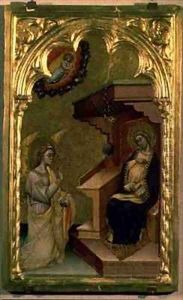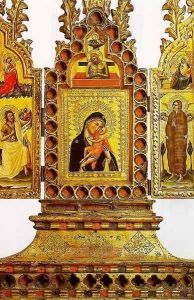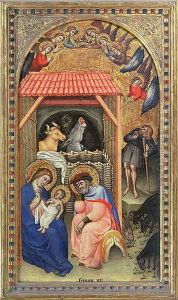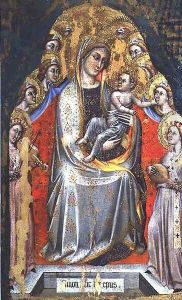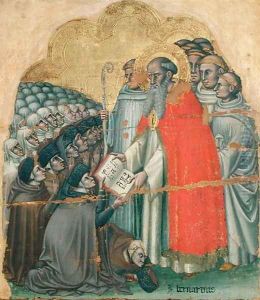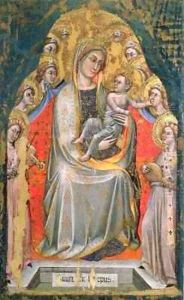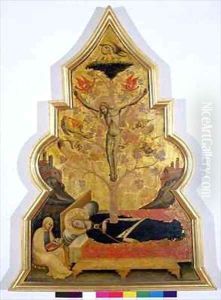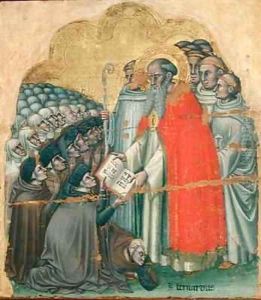Simone dei Crocefissi Paintings
Simone dei Crocefissi, also known as Simone da Bologna, was an Italian painter who lived during the 14th century, specifically the late Medieval period known as the Trecento. He was born around 1330 in Bologna, in the Papal States, and his work is associated with the Bolognese school of painting. Simone's artistic career was influenced by the prevailing Gothic style and the earlier Bolognese master Vitale da Bologna, whose tradition he continued and developed further in his own work.
Simone dei Crocefissi's works are characterized by their devout religious themes, and he was primarily a painter of devotional panels, many of which were intended for private worship. His style is noted for its emotional expressiveness, attention to detail, and the use of vibrant colors. One of his most significant contributions to Bolognese painting was his adept use of color and his ability to convey deep religious sentiment through his images.
Simone's career was prolific, and he ran a busy workshop, which contributed to the dissemination of his style. He was active during a time when Bologna was an important center for the production of illuminated manuscripts, and this may have influenced his detailed painting style. His works include a range of subjects, from the Crucifixion to the lives of saints and the Virgin Mary. Unfortunately, despite his once considerable local fame, only a limited number of works attributed to him survive today.
Simone dei Crocefissi died in 1399 in Bologna. Although he is not as widely known today as some of his contemporaries, his contribution to the Bolognese school and the development of Italian Gothic painting remains significant. His works are held in various museums and collections, and they continue to be studied for their contribution to the understanding of late medieval art in Italy.
